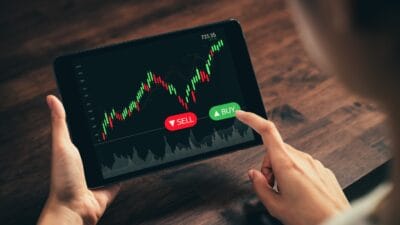To The Guardian, at least, the 24th August was ‘Black Monday’, with London’s FTSE 100 index closing down 4.6% at 5,899, and markets in France and Germany down 5.5% and 4.96% respectively.
Over the Atlantic, Wall Street’s Dow Jones plummeted 6% on opening, before closing a modest 3.6% lower. China — where the contagion began — saw the Shanghai Composite close down 8.5%, its worst daily fall since the financial crash in 2007.
Bad, certainly. But those of us with longer memories remember a real Black Monday — Black Monday, 20th October 1987, when the FTSE fell by 10.8%. It then topped this to plummet a further 12.2% the following day. In a rocky few days, investors saw a quarter of their net worth simply vanish.
Stellar Growth
But although investors didn’t know it, a stock market boom was about to begin.
At levels of 1,800 or so immediately after Black Monday 1987, just over a decade later the FTSE was to breach 5,000 for the first time. And to save you doing the sums yourself, that’s an annual compound growth rate of almost 11%.
Put another way, had you stuffed £10,000 into a clutch of averagely performing FTSE 100 stocks in the days following Black Monday 1987, you’d have been sitting on just short of £28,500 ten years later. And that’s ignoring dividends.
Flashing Indicator
Could it happen again? Some people think so. After all, at today’s level of 6,200 or so, the FTSE is little changed from where it was 15 years ago.
Morgan Stanley, for instance, has issued a ‘full house’ buying alert, saying that all five of their market indicators are now flashing ‘buy’ — hence the ‘full house’ epithet. It’s only the sixth time that it’s happened in 20 years, and first time that it’s happened since January 2009, just before the FTSE’s recession-fuelled nadir.
And typically, says the bank, such signals mark the bottom of a V-shaped recovery, with markets posting a 23% gain over the following 12 months. Put another way, that’s pointing to a FTSE of around 7,400 in the late summer of next year.
According to Graham Secker, the bank’s chief European equity strategist, the present correction is largely driven by emotion, rather than the underlying outlook for the world economy, and ignores the value of stocks versus other asset classes such as bonds.
And the bank’s market indicators do have a track record. In June 2007, Morgan Stanley issued a ‘full house’ sell alert, for instance, just weeks before the credit crunch bit, tumbling the world into recession — taking the bank’s less canny competitors, such as Lehman Brothers, with it.
What To Do?
Well, there’s no immediate rush to do anything. As Morgan Stanley itself admits, its ‘full house’ signals are historically a little early.
For proof, the bank points to three examples where the market’s bottom arrived some months later — typically 20% or so lower than when the buy alert was issued.
In each case, though, markets had strongly recovered a year after the first ‘full house’ signal had flashed.
Put another way, then, Morgan Stanley might be saying that we’ve entered bargain territory, rather than having called the market’s bottom.
And to put numbers on that, the present market’s real bottom might be when the FTSE begins with a ‘4’ — and not a ‘5’ or a ‘6’.
How To Play It?
So here’s my own take on things.
I think, yes, markets are cheap — although they could yet get cheaper still.
I also think that buying decent shares right now will look a smart move in a year or so’s time. And I plan on doing exactly that.
But it’s also worth keeping some cash in reserve. Just because there are bargains to be had right now, doesn’t mean that there won’t be even juicier bargains as the autumn wears on.







